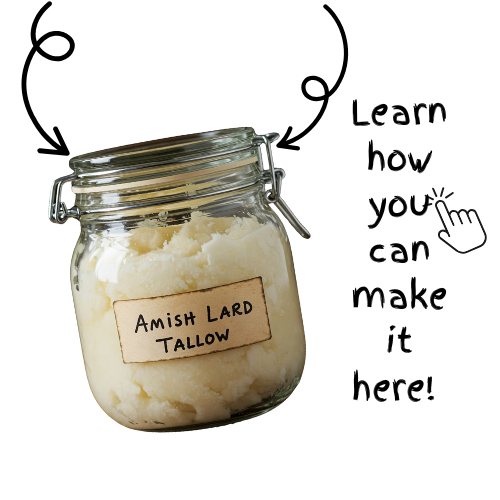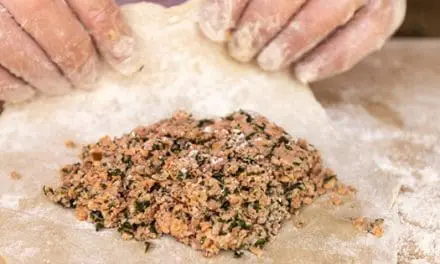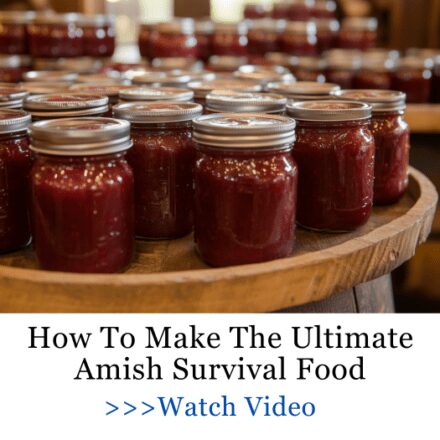When the Great Depression struck, coal miners and their families were among the hardest hit. With their paychecks slashed and the mines shutting down without warning, putting food on the table became a daily battle. Every meal was uncertain, and survival often came down to a handful of shelf-stable foods that could stretch through even the harshest times.
Fast forward to today, and while the world looks different, the same cracks are starting to show again. Supply chains falter, prices surge, and people once more find themselves wondering how to stretch their dollars at the grocery store. The same foods that kept coal miners alive during the Great Depression may just hold the key to riding out the next crisis that’s knocking on our doors. And it may be closer than most people want to believe.
The Survival Principles of the Coal Miners
Miners never knew if they would have enough to eat. Fresh produce was rare and expensive, and store prices often drained whatever little cash they had left. That made shelf-stable foods absolutely critical. They were long-lasting, calorie-dense, and inexpensive.
Rationing and planning ahead became a necessity. Leftovers were repurposed, and people preserved whatever they could. Foods like beans, oats, flour and dried fruit were measured and rotated to stretch supplies as far as possible.
Basic Foods Coal Miners Relied On
Before creating full meals, miners depended on simple, shelf-stable ingredients they could store and stretch:
1. Beans
Beans were a staple for miners because they were cheap, filling, and packed with protein. They could be stored dry for long periods of time and easily tossed into soups or stews to feed a whole family.
If you keep a variety of beans in your pantry (black beans, kidney beans, lentils), you will always have a versatile source of protein and fiber whenever you need it. Stored in airtight containers in a cool, dark place, dry beans can last up to 2–3 years. You can extend shelf life to 5+ years by adding oxygen absorbers or vacuum-sealing smaller batches. Beans can be soaked, cooked, and frozen, or even sprouted for extra nutrition.
2. Oats
Oats provided energy for long shifts underground. Miners would eat them as porridge or add them to baked goods. They were inexpensive, filling, and required minimal preparation.
Rolled or steel-cut oats can be stored in airtight containers in a cool, dry place for up to 12 months, while oat flour lasts for about 6–8 months. For longer storage, you can freeze oats in sealed bags to keep them fresh for up to 2 years.
3. Hard Cheeses (Aged and Wax-Sealed)
Aged cheeses like cheddar or gouda were often preserved in wax or salt. They could last for weeks without refrigeration and provided a dense source of protein and fat, and they would also use them for stretching other staples.
Wax-sealed or vacuum-packed, cheeses can last 2–3 months in the pantry if stored in a cellar, and even longer in the fridge. Hard cheeses can also be grated and frozen in portions for up to 6 months. You can store these cheeses for emergency protein, and use them sparingly to enrich meals.
During the Great Depression, coal miners sometimes gathered wild mushrooms or traded for dried ones. They provided essential vitamins and minerals, and could last for months without refrigeration when dried.
Stored in airtight containers in a root cellar, they can last for about 12 months, and even longer if vacuum-sealed. Simply rehydrate them in water before adding them to soups, stews, sauces, or grain dishes.
A well-designed underground cellar, such as the one described in The Easy Cellar, offers exactly that kind of protection. Built a few feet beneath your backyard, this discreet shelter can store enough food, water, and essential supplies to sustain you and your family for several months, not just a few days.Inspired by traditional root cellars used by our ancestors, this modern design has been improved to provide far greater security, similar to a small-scale bunker. Importantly, it also offers a significant layer of defense against an EMP strike, shielding your critical supplies and providing a refuge when all electronic systems fail.Even better, this shelter is very affordable. You can build it for under $400 and complete it in less than a week, entirely on your own, without the need for expensive contractors or specialized equipment.
5. Hardtack
This dry biscuit was a lifesaver underground, because it was not prone to spoiling or getting crushed. It was made from simple ingredients, could last for years without spoiling and resist even the harshest conditions. Miners used to store it and soften it in soups or stews when they needed a durable source of carbohydrates.
Hardtack biscuits make an excellent emergency bread alternative. They can last just literally forever and can be crumbled into soups, stews, or even used as a crunchy topping for casseroles.
6. Fermented Grain
Miners sometimes improvised with leftover grains, fermenting them to stretch their food supply. They provided extra nutrition and could be dried for storage, so they became a long-lasting base for meals.
Once dried and stored in airtight containers, they can last for about 12 months. They offer prebiotic benefits and can be used as a base for soups, stews, or even breakfast porridge. It provides a nutritious, shelf-stable ingredient that can enhance meals while also supporting digestive health.
7. Canned Eggs
Eggs were essential for protein, but fresh ones spoiled quickly underground. In order to preserve them, they used methods like pickling or water-glassing, which made them last several weeks while still providing essential nutrition.
Pickled or water-glassed eggs can last for 3–6 weeks at room temperature, and even longer if stored in a root cellar. This makes them a great backup protein source if fresh eggs aren’t available or during shortages. Another option is to preserve them in salt.
I first learned about salt preservation from the Amish Ways book. Honestly, I wish more people knew about it; it’s a game-changer for any homesteader.
For the first time ever, this 200-year-old wisdom is available in a beautifully made hardcover edition, authored by Eddie Swartzentruber, a man who spent 16 years living within the Amish community and learning their way of life first-hand. You can grab your own copy today and claim 3 FREE BONUSES using my exclusive 76% discount coupon right here.
8. Dried Fruit
Miners kept dried fruits like apples, raisins, and prunes on hand because they stored well for months, didn’t require refrigeration, and could be eaten alone or added to porridges, baked goods and even stews. They were packed with essential vitamins, minerals, and fiber and provided a reliable source of nutrition when fresh fruit was scarce.
When stored right, they can last for about 12 months without refrigeration. Freezing them can extend shelf life even further.
9. Cornmeal
Cornmeal was inexpensive, filling, and very easy to store. It could be turned into cornbread, pancakes or porridge, and it stretched other food supplies.
It can last up to 1 year in your pantry. You can add it bulk to soups and casseroles.
>>> How to Build an Affordable Great Depression Stockpile <<<
10. Salted or Cured Meat
Fresh meat wasn’t always an option, so miners relied on salted, smoked or cured cuts. Properly prepared, these meats could last several months.
Modern alternatives like jerky, canned meats, or frozen portions work just as well for prepping or stretching meals. Jerky can last 1–2 months at room temperature (even longer if refrigerated), canned meats can last 2–5 years, and frozen cuts stay good for 6–12 months. They provide shelf-stable protein for emergency meals or you can use even them to stretch everyday cooking.
Shelf-Stable Recipes That Kept Coal Miners Alive During Depression
Coal miners relied on a small selection of foods that could last through weeks or even months. These staples were inexpensive, filling, and easy to store.
Bulldog Gravy
This thick, savory gravy was a staple for miners when meat was scarce. It was made from rendered fat, flour, and water or milk and it turned simple bread or potatoes into a filling meal. You can recreate it today with lard or bacon drippings, a bit of flour, and seasonings.
2 tablespoons rendered fat (lard, bacon drippings, or butter)
2 tablespoons all-purpose flour
1 cup water or milk
Salt and pepper to taste
How Do You Make It?
- Melt the fat in a small saucepan over medium heat.
- Stir in the flour to form a smooth roux, cooking for 1–2 minutes until lightly golden.
- Gradually whisk in water or milk, stirring constantly to avoid lumps.
- Simmer until thickened, then season with salt and pepper.
- Pour over bread, potatoes, or cooked vegetables.
Cracklin’ Bread
Miners used every part of the animal, especially fat or skin. They would fry down pork rinds into crispy bits and fold them into cornbread. You can replicate it with rendered lard and fresh cornmeal.
Ingredients:
2 cups cornmeal
1 cup flour
1 tsp salt
1 tsp baking soda
2 cups buttermilk (or milk with a splash of vinegar)
2 eggs
¼ cup lard (melted)
1 cup pork cracklins (small pieces of fried pork skin)
How to Make It:
- Preheat your oven to 400°F (200°C) and grease a cast-iron skillet with lard.
- Mix cornmeal, flour, salt, and baking soda in a bowl.
- In another bowl, beat eggs and stir in buttermilk. Add the melted lard.
- Combine wet and dry ingredients, then fold in the cracklins.
- Pour the batter into the hot skillet and bake for about 25–30 minutes, until golden and firm in the center.
- Let it rest a few minutes before cutting.
Corn Dodger
Coal miners often packed these for lunches because they kept well without refrigeration. It’s simple, hand-shaped cornbread made from cornmeal, water, and fat, cooked in a skillet or oven. Here are the ingredients you’ll need:
2 cups cornmeal
1 teaspoon salt
1 tablespoon fat (lard, bacon drippings, or butter)
1 to 1 ¼ cups boiling water
Instructions:
- In a bowl, mix the cornmeal and salt together.
- Stir in the fat until evenly distributed.
- Carefully pour in the boiling water, a little at a time, until the mixture forms a stiff dough.
- Shape the dough into small patties or “dodgers” with your hands.
- Place them in a greased skillet or on a baking sheet.
- Bake at 425°F for 20–25 minutes, or cook in the skillet over medium heat until golden brown on each side.
Bean and Potato Pie
Mashed potatoes formed the crust, while beans made up the filling, often with onions or scraps of meat added for flavor. It was dense, high-calorie, and easy to carry. You can make with nothing more than potatoes and beans from your pantry.
What you’ll need:
3 cups mashed potatoes (seasoned with a little salt and fat)
2 cups cooked beans (pinto, navy, or whatever you have on hand)
1 onion, diced
1 cup cooked meat scraps (optional, if available)
2 tablespoons fat (lard, butter, or bacon drippings)
Salt and pepper to taste
How to make it:
- Preheat your oven to 375°F.
- Grease a pie dish or skillet with fat.
- Spread the mashed potatoes across the bottom and up the sides to form a “crust.”
- In a skillet, sauté the onion in fat until softened. Add the beans and meat (if using), seasoning with salt and pepper.
- Spoon the bean mixture into the potato crust.
- Top with a thin layer of mashed potatoes, if you have extra.
- Bake for 25–30 minutes, until the top is golden and the pie is heated through.
Coal Miners’ Preservation Methods You Can Still Use Today
You can make foods last longer, stretch your pantry, and stay prepared by using preservation methods that have stood the test of time. Canning, drying, fermenting, smoking, and preserving fats like lard were essentials for miners, and they can be for you too. You can store jars of beans, pickles, or fruit, dehydrate vegetables and eggs, ferment your cabbage into sauerkraut, or smoke your meats. Even simple steps, like rotating your stock and keeping items airtight make a big difference.
Fill Your Pantry The Old-Fashioned Way
Inside A Navy SEAL’s Bug-In Guide, you will discover exactly how to build a long-lasting stockpile that needs no refrigeration. It starts with a complete stockpile that you can eat from morning, lunch, and dinner for three months. Then you’ll have another one for six months and another for a full year.
You’ll see exactly where to buy these foods so they’re as affordable as possible. You’re also going to get a day-by-day and meal-by-meal rationing plan to make sure you are not only getting around 2,200 calories a day but also the vital protein, fat, and other nutrients that will keep you healthy in the long run.
Besides what I’ve mentioned so far, here are some other things you’ll find inside:
- The Under $1 Walmart Canned Goods You Absolutely Need to Add to Your Food Reserves
- A Meal in a Jar That Can Feed You for a Week
- How to Make the Ultimate Survival Food with a 25-Year Shelf Life
- The Only Seeds You Need to Stockpile for a Crisis
- What Item You Should Remove from Your Pantry Immediately
- How to Hide That You Still Have Power Left in a Blackout
- What Great Depression Foods We’ll Be Eating Again Soon
- How to Use a Car Battery to Power Up Your Radios
- What Happens if You Take Expired Medications
And so much more!
The author has printed only a limited batch of copies this time, and once they’re gone, they’re gone for good. You can access my personal discount from the button below!
Final Thoughts
The coal miners of the Great Depression didn’t have much, but they had grit, ingenuity, and the know-how to make a little go a long way. They turned simple, shelf-stable foods into full meals that kept their families alive when the mines went silent and money ran dry. Their lessons in preservation, rationing, and self-reliance are just as vital now as they were nearly a century ago.
We may not be facing the same kind of hardship they did, but with supply chains breaking down and prices rising faster than paychecks, the warning signs are hard to ignore. The truth is, the old ways still work. And those who prepare now won’t be caught off guard when shelves run empty again.
How to Make Cowboy Bread (Lasts Months in Your Pantry)
How The Amish Keep Their Food From Rotting For Months (Video)
How to Make Long-Lasting Flour from Wild Grains, Seeds, Nuts and Bark





















